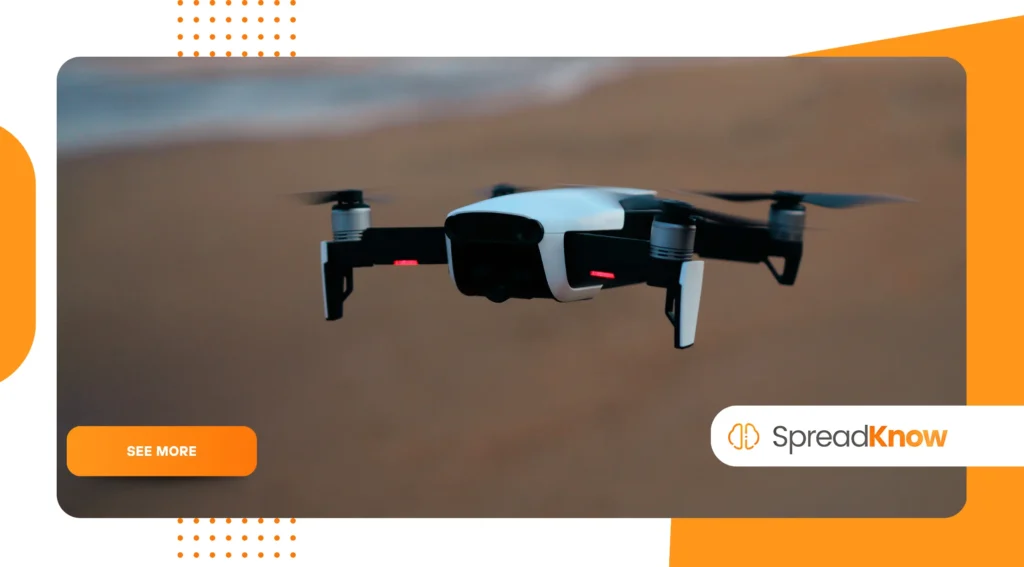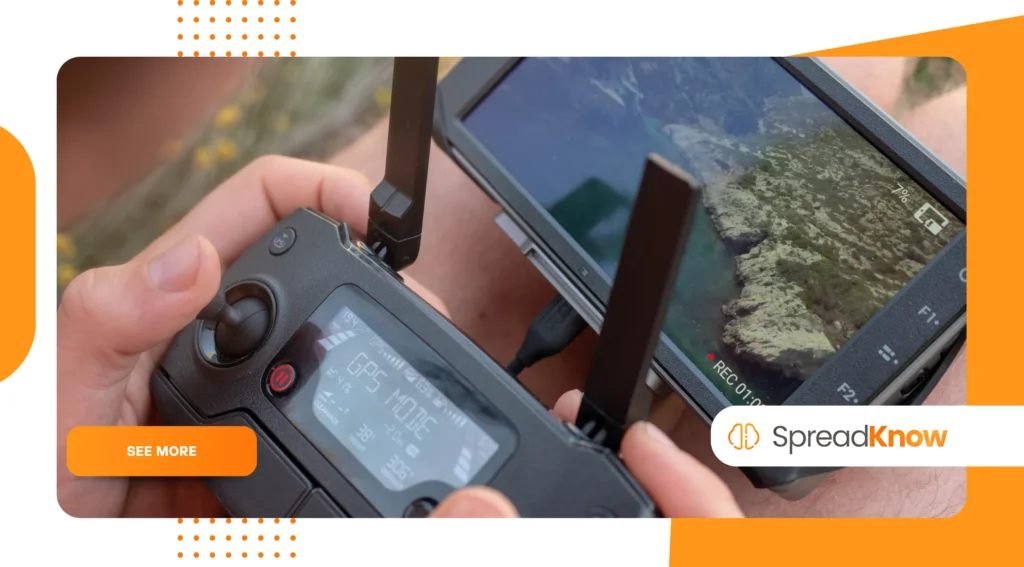Insegnare le tecniche di fotografia con i droni in modo sicuro agli adolescenti

Teaching Drone Photography Techniques Safely to a new generation is more than just piloting; it’s about fostering responsibility and artistic vision from the ground up.
Annunci
This article explores how to integrate essential safety protocols with captivating aerial photography instruction for teenagers, ensuring both legal compliance and creative excellence in 2025.
You will discover the regulatory landscape, the immense educational value, and the practical steps for developing an advanced, responsible youth drone program.
Why Is Drone Photography an Essential Skill for Today’s Teenagers?
Offering exposure to drone technology provides a gateway to numerous high-demand career paths.
Aerial photography merges artistic flair with technical expertise, appealing to diverse interests among young adults.
Annunci
Students learn valuable principles of physics, engineering, and visual storytelling through this compelling medium.
Incorporating drones into education boosts essential STEM skills in an engaging, hands-on environment.
Piloting a camera in the sky demands concentration, problem-solving, and a precise understanding of spatial awareness.
These practical applications are significantly more memorable than abstract concepts learned from a textbook alone.
Creative teenagers find a fresh perspective, elevating their photographic and video work literally and figuratively.
They move beyond ground-level shots, capturing stunning landscapes and unique architectural perspectives with newfound depth. Drone photography is a modern canvas for their boundless creativity.
Arts and Culture: Le donne nella storia dell'arte: finalmente le loro voci vengono ascoltate
How Can We Master Teaching Drone Photography Techniques Safely and Legally?
Safety and adherence to aviation law form the non-negotiable bedrock of any effective drone program.
Instructors must model and enforce a culture of vigilance, treating every flight as a serious commitment to airspace safety. Comprehensive training ensures teens fully grasp their pilot responsibilities.
Understanding the current regulatory environment is paramount, especially for recreational teen pilots.
In the United States, for example, any drone over 0.55 pounds (250 grams) must be registered with the FAA.
Teaching Drone Photography Techniques Safely requires current knowledge of these weight and registration rules.
A crucial requirement for all recreational drone flyers in the U.S. is passing the TRUST (The Recreational UAS Safety Test).
This free, online aeronautical knowledge test is legally required, demonstrating a commitment to safe operations before the drone ever leaves the ground.
Proof of passage must be carried during flight operations.
Adolescents must learn the critical importance of keeping the drone within their visual line of sight (VLOS) at all times.
Losing sight of the aircraft, even briefly, can pose a risk to manned aviation or property below, a core tenet of Teaching Drone Photography Techniques Safely.
You must stress the importance of clear communication with a visual observer during complex maneuvers.
+ Routine di riscaldamento essenziali per musicisti: migliorare le prestazioni e la longevità
What Specific FAA Rules Apply to Teen Recreational Flyers in 2025?
Federal regulations set strict boundaries to protect the National Airspace System.
These boundaries include a maximum flight altitude of 400 feet (122 meters) above ground level in uncontrolled airspace, a fundamental safety rule.
Avoiding flights near emergency operations, such as wildfires or police activity, is mandatory.
Teens must use the LAANC (Low Altitude Authorization and Notification Capability) system before flying in controlled airspace near airports.
This digital application process ensures air traffic control is aware of the drone’s presence, preventing dangerous close calls with manned aircraft. Authorization is simple but required.
IL Remote ID mandate requires most drones over 250 grams to broadcast identification and location data.
This “digital license plate” ensures accountability and is a current, non-negotiable reality of drone operation for safety and security. Operating without Remote ID compliance is a significant regulatory violation.
Consider the metaphor of learning to drive a car: you first master the rules of the road and the vehicle’s mechanics before attempting any fancy driving.
Allo stesso modo, Teaching Drone Photography Techniques Safely means mastering the rules of the sky first, prioritizing compliance over creative urges.
+ Come le biblioteche pubbliche si stanno reinventando per l'era digitale
Why Must Curriculum Emphasize Airspace Awareness?

A detailed understanding of airspace classifications is vital for responsible piloting. Teens need to know the difference between uncontrolled (Class G) and controlled airspace (Classes B, C, D, E).
The free FAA B4UFLY app is an indispensable tool for instantly checking location-specific restrictions.
You must explicitly teach the concept of “yielding the right-of-way” to all manned aircraft, including planes and helicopters.
The small, quiet nature of a drone makes it nearly invisible to a pilot in the cockpit. Drone operators must constantly scan the sky for full-sized aircraft.
How Should We Teach Privacy and Ethical Concerns?
Drone photography offers incredible reach, which introduces serious ethical and privacy considerations.
A responsible curriculum must include discussions on avoiding surveillance and respecting private property boundaries.
Capturing images in areas with an expectation of privacy requires explicit permission.
Imagine a teen capturing a stunning sunset, but the shot inadvertently includes an image of a private backyard pool and sunbathers.
This is a powerful teaching moment about the intersection of art and privacy law. Ethics and law are inseparable in the realm of aerial photography.
You must impress upon young pilots the weight of their potential influence, both positive and negative.
Drones are not just toys; they are sophisticated imaging platforms capable of intrusion. Using them thoughtfully is a mark of a mature, skilled pilot.
One real-world statistic shows the seriousness of responsible operation: A 2017 survey on public acceptance of drones indicated that public sees drones as a risky technology that directly interferes with their privacy, suggesting an ongoing need for ethical education.
Addressing public concerns head-on builds a foundation of respect for the community.
What Photography Skills Complement Safe Drone Operation?
Beyond safe piloting, the core of the instruction is cultivating an eye for composition from above.
Mastering the art of the aerial image involves techniques distinct from ground photography, focusing on scale, patterns, and leading lines.
Teaching Drone Photography Techniques Safely means blending technical and artistic skillsets.
How Do We Teach Aerial Composition Effectively?
The rules of composition, like the rule of thirds, remain foundational but take on a new dimension when applied aerially.
Teens learn to use natural or man-made features to guide the viewer’s eye through the frame, creating visual flow. Look for fields, rivers, or roads to act as “leading lines.”
Instructors should focus on teaching how perspective changes the narrative of a photo dramatically.
A high-angle, top-down view (the “God’s-eye view”) emphasizes geometric patterns, while a low-angle shot creates depth and drama. Experimentation with angles is key to developing a unique style.
What Technical Elements are Crucial for Teens to Master?
Teens need to understand how to manage camera settings like shutter speed, ISO, and aperture for aerial video and stills.
Learning to shoot in manual mode provides maximum creative control over exposure, crucial for bright daytime skies. The technical skills transfer directly to traditional cameras.
Mastering post-processing software is the essential final step in aerial photography.
Editing tools like Adobe Lightroom or similar applications allow students to enhance colors, sharpen details, and correct lens distortions. The finished product reveals the true power of their capture.
As a hands-on exercise in safety and technique, assign a project focused solely on capturing a unique local landmark, such as an abandoned water tower.
They must first secure a flight authorization plan for the area, then execute creative shots while maintaining the mandatory 400-foot altitude limit. This links law, safety, and art.
You can encourage students to document their own neighborhoods, strictly adhering to property boundaries and privacy expectations.
For instance, creating a time-lapse of cloud movement over a local park showcases technical skill, safety compliance, and creative vision. The final product is both beautiful and responsible.
Consider this detailed comparison of safety and technique topics:
| Safety Requirement (Mandatory) | Photographic Technique (Creative) | Educational Value |
| FAA Registration (>250g) & Remote ID | Rule of Thirds and Horizon Leveling | Legal Compliance & Composition |
| Pass the TRUST Test Certificate | Manual Camera Settings (ISO, Shutter) | Aviation Knowledge & Exposure Control |
| Maintain Visual Line of Sight (VLOS) | Use of Leading Lines and Geometric Patterns | Spatial Awareness & Visual Flow |
| Obtain LAANC Authorization in Controlled Airspace | Exploring High-Angle (God’s Eye) and Low-Angle Shots | Airspace Management & Perspective |
Navigating the skies safely is as essential as understanding the aperture setting; one protects the drone, the other captures the art.
What Are the Long-Term Benefits of Teaching Drone Photography Techniques Safely?
Beyond the immediate thrill of flying and creating, drone skills are powerful additions to a teen’s academic and professional portfolio.
The convergence of technology, law, and art creates a well-rounded, attractive skill set for future employers and universities. These skills demonstrate maturity and technical proficiency.
Providing youth with certified instructors and a clear, safety-first curriculum builds long-term industry trust.
They become advocates for responsible drone use, helping to shape public perception positively, which is vital for the future of the technology.
For deeper exploration of the regulatory landscape, you should explore the resources provided by the Federal Aviation Administration’s (FAA) website on drone safety.
Students with drone experience gain a competitive edge in fields like civil engineering, architecture, real estate, and filmmaking.
They are already familiar with the tools that are rapidly becoming industry standards. This practical expertise translates into real-world career opportunities.
How Does Drone Education Foster Responsibility and Maturity?
Handing a teen the controls of an expensive piece of flying technology forces them to confront real-world responsibility.
The potential for damage or regulatory violation is a powerful incentive for careful planning and deliberate execution of every flight. This develops disciplined, mature decision-making.
Learning to check weather conditions, plan flight paths, and assess potential hazards cultivates a sense of foresight and preparation.
Drone piloting is an exercise in meticulous detail and risk management. Can any high school course offer a more direct lesson in accountability?
Conclusion: Elevating Responsibility and Creativity
Teaching Drone Photography Techniques Safely to teenagers is a profound investment in their future.
It skillfully marries the technical demands of aviation safety with the limitless bounds of creative expression.
By prioritizing compliance, ethics, and artistry, you empower them to become the next generation of responsible, innovative aerial storytellers.
The skills learned extend far beyond the camera lens, shaping them into conscientious, technologically literate adults.
Domande frequenti
What is the minimum age to fly a recreational drone?
There is no minimum age requirement to fly a drone recreationally in the US; however, if the drone requires registration, the registrant must be at least 13 years old. Anyone of any age must still adhere to all safety and operational rules, including taking the TRUST test.
Do teens need a special license for recreational drone photography?
Recreational flyers must pass The Recreational UAS Safety Test (TRUST) and carry the completion certificate. They do not need the FAA’s Part 107 Remote Pilot Certificate unless they intend to fly for commercial purposes.
Where can I find the most up-to-date drone safety regulations?
The most current and authoritative source for regulations in the United States is the FAA’s Recreational Flyers & Community-Based Organizations page. Always check federal guidelines, as local laws may also apply in certain areas.
